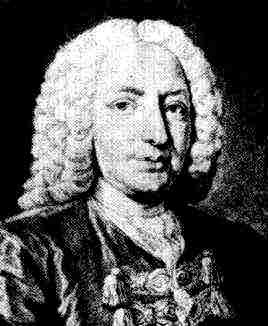| Profile | Major Works | Resources |
Daniel Bernoulli, 1700-1782.


Dutch-Swiss mathematician, first articulator of the expected utility hypothesis.
Born to a family of mathematicians - his father was Johan Bernoulli, his uncle Jakob Bernoulli and his younger brother Johan II. Preciously gifted, Daniel's mathematical skill led to an unhealthy rivalry with his father, with the lamentable consequence of a personal break between the two. Bernoulli was a close friend of Leonhard Euler.
In 1724, Bernoulli moved to St. Petersburg, Russia to teach mathematics at the new university, but left in 1734. He went on to teach at the university of Basel, Switzerland, for much of the remainder of his life.
Bernoulli's principal work in mathematics was his treatise on fluid mechanics, Hydrodynamica. In economics, Bernoulli is best known for his 1738 article resolving the St. Petersburg paradox, a probability problem set by his cousin Nicholas Bernoulli in 1713, involving the solution to a game of chance with an infinite expected return. Daniel's proposed solution introduced two revolutionary ideas: (1) the expected utility hypothesis (namely, that people value not the expected money return, but rather the expected utility return), and (2) the concept of diminishing marginal utility (that utility is an increasing function of money, but at a diminishing rate). This enabled him to solve for a finite expected utility, and thus solve the paradox.
|
Major works of Daniel Bernoulli
|
|
HET pages
|
|
Resources on Bernoulli
|
All rights reserved, Gonšalo L. Fonseca
